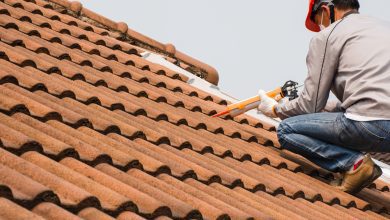How Should Hindu Idols Be Placed in Our Home Temples?

Every Hindu house has a prayer place on the east or north side of the house. A temple is an integral part of the Home where people keep the idols of gods and goddesses and pray to them, which is his way of meditating and connecting with God. It gives them calm and inner strength.
Some rules must be followed when placing idols in your home temple. Hindus have many forms of gods. On our online platform, you come across various gods and goddesses idols, such as brass idols, shiva Nataraja statues, stone Ganesh statues, and many more. Non-observance of these rules is considered unfavourable by the Vedas and especially important from the Vastu point of view. Let us see what these rules are:
First Place Must Go to Ganeshji
The idol of Ganesh should take first place in your temple. According to the many Hindu Shastra and Vedas, Ganesh ji has first place among all gods and goddesses, and Ganesh ji is worshipped first during a puja. It is believed in Hindu shastras that Ganesh ji is the only deity who understands the language of sound and has the superpower to turn it into the light.
In contrast, all other deities only know the language of light, and it is Ganeshji who transmits everything to them. Ganesh ji, all the other gods, are happy with you too, so this is of the utmost importance. To have Ganesh at your Home or entrance, visit our website; you can get brass Ganesh idols, stone Ganesh statues and standing Ganesh idols.
Isht Dev, Kuladevi and Kuldev Isht Dev and Devi help to fulfil their wishes.
These are the gods considered by their ancestors to be protectors of the family, so they should be placed after Ganesh ji. Place them right after Ganesh ji, or you can put your Kuladevi or Kul Devta after Ganesh ji.
Follow the Cone-Shaped Arrangement for Deities
According to Ganesh ji and Isht Dev, a cone-shaped arrangement is considered the best for placing other deities. The end and widest part of the cone must contain the deities of the gods Brahma, Vishnu, and Mahesh, as they are the universe’s creator, administrator, and destroyer. In this arrangement, there is a designated place for each deity. Goddesses are placed on the right side, while all male gods should be on the left side.
Idols should be based on your Respect, Willpower, Knowledge, and Karmashakti (in that order). This arrangement indicates that the sharpest edge of the order has Ganesh ji, who manifests good virtues. In contrast, the widest part has the Trinitarian gods Brahma, Vishnu, and Mahesh, who have no fixed attributes.
The Proper Direction to Place Each Idol
It is believed that Brahma, Vishnu and Maheshwara, along with Surya dev and Karthikeyan, should be placed in the year in the east with their eyes facing west.
If you love the Shivling, place it in a northerly direction. The eyes of Ganeshji, Ma Durga, and Bhairav should move from north to south. Never place the shiva Nataraja statue in the pooja room, as it angers form. You may place it in the living space. If, for some reason, you still cannot put the idols in the above order, place all the deities in the northeast direction.
Do’s and Don’ts of Placing Hindu Deities in Homes and Shops
- When keeping idols of Hindu deities in homes and businesses, there are a few essential things you need to take care of, or sacred places in domestic and commercial facilities are intended to generate positive energy. Positive energy helps alleviate all forms of trouble. Certain types of idols should be avoided.
- These are the pros and cons regarding placing idols of Hindu gods and goddesses for puja purposes. The back of the idol should never be visible while performing prayers and puja. It must cover the back of the idol. Should not worship two idols of the same God or goddess in the puja area. It could lead to constant fighting on the ground.
- Bhagavan’s torn and torn murtis should be buried. They should not be abandoned or thrown into rivers or lakes. Murtis used for worship should always be in the blessing posture. The face should be happy or peaceful. Broken idols and broken paintings should not be used in pictures and photos for worship.
- An angry posture can attract negative energy, such as the shiva Nataraja statue (Rudra form of shiva). Murtis, representing gods and goddesses involved in the war, should not be worn in the puja area, especially in homes and commercial establishments.
Conclusion
Bringing India closer is our main task. We are the fastest-growing leading market portal for Indians in the USA, UK, Canada, Australia and many more countries. It is the largest platform for buying Indian products. Our marketplace platform has over 50,000 product listings and has been proliferating. We have products ranging from home décor, Indian clothing, gifts, and cookware.
Indian clothing department offers a wide range of Indian designer clothing, from Salwar Kameez, Indian Sarees, Lehenga Choli, and Children’s and Men’s Clothing. We sew all Indian garments entirely to measure. We sew entirely to customer measurements and have free shipping. Customers can work directly with suppliers, and we offer 100% transparency on engagement.
Free couture on all Indian clothing orders. We have the most extensive collection of Indian home décor. Return Gifts from India is an impressive list for all Housewarming Gifts, Baby Shower, Indian Weddings, and Indian Festivals like Navaratri. We also have stone Ganesha statues and brass idols to give to someone on festivals or occasions.






